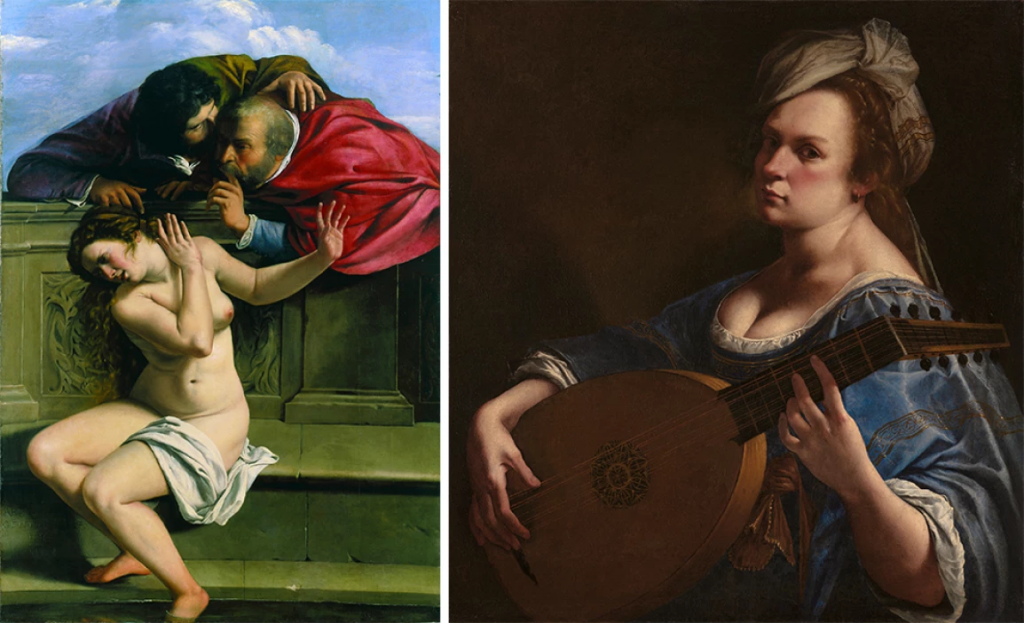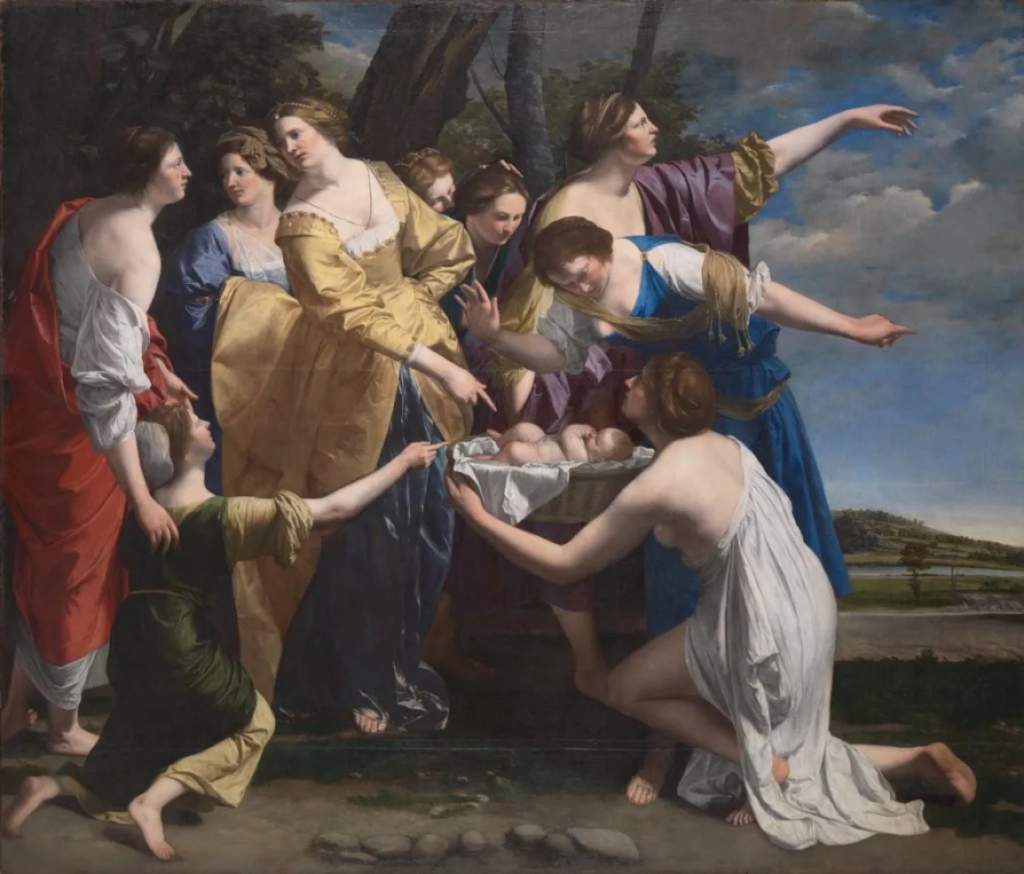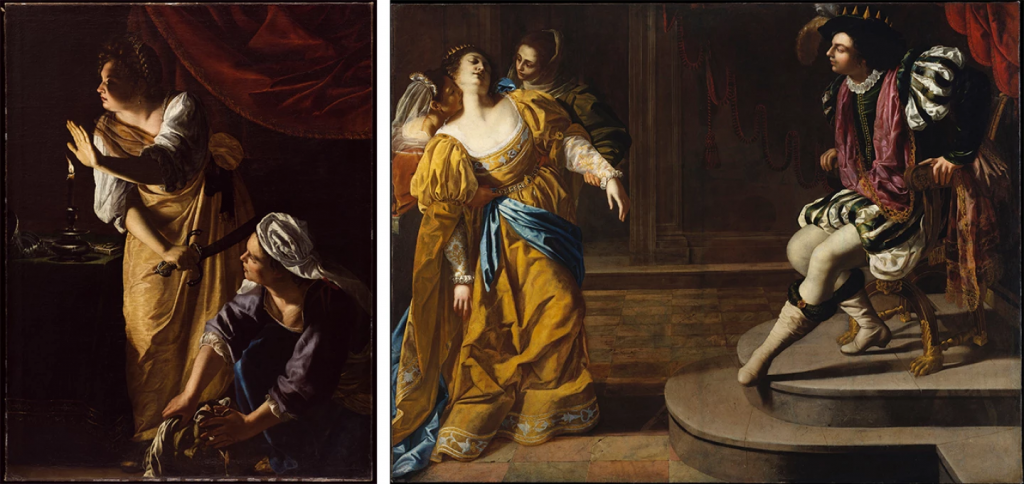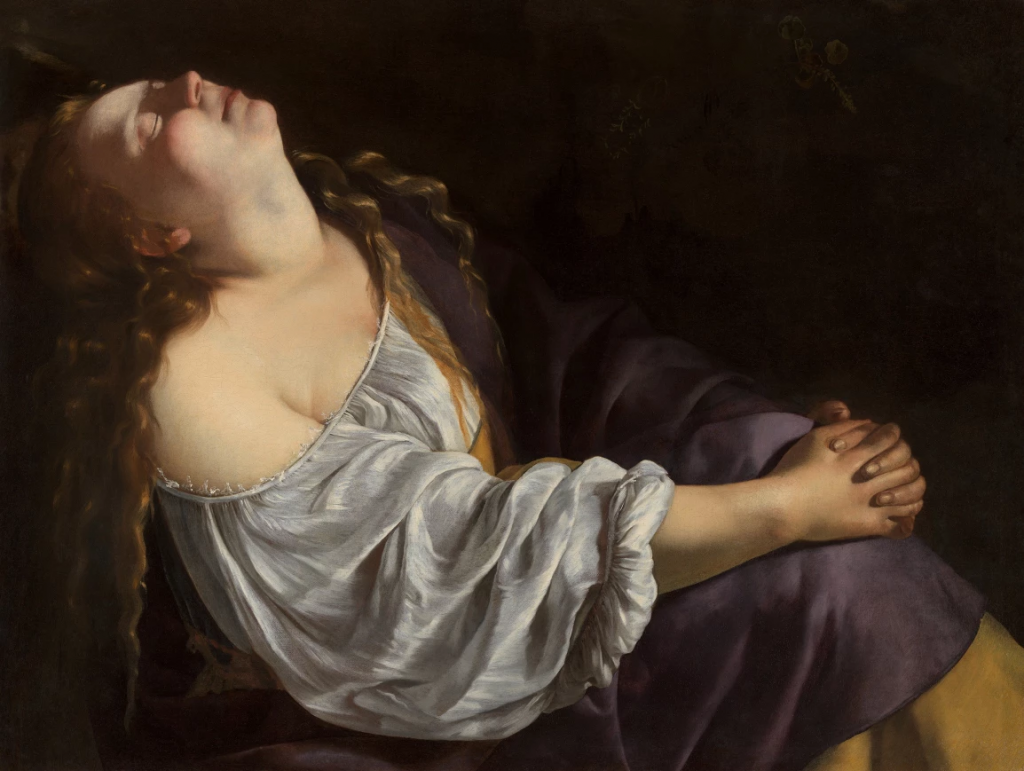Born in 1592, the Italian-Baroque painter Artemisia Gentileschi was always ahead of the curve. An upcoming exhibition at the National Gallery in London, ‘Artemisia’, supported by Sotheby’s, demonstrates that centuries on, the pioneering artist remains in the vanguard.
In 2020, London’s National Gallery staged an exhibition that explored the life and work of one of the most accomplished and fabled Old Masters, Artemisia Gentileschi.

Artemisia Gentileschi, Self portrait as the allegory of painting (La Pittura), about 1638-9. Royal collection trust / © Her Majesty Queen Elizabeth II 2019.
The show, instigated by the gallery’s 2018 acquisition of Gentileschi’s 1615 Self Portrait as Saint Catherine of Alexandria, joins a host of events celebrating the artist, including plays, books and even operas. “It’s her moment in every art form possible,” says Letizia Treves, the show’s curator, who has selected 29 key paintings from Gentileschi’s sizeable œuvre, as well as two by her father Orazio, from whose workshop her career began. These works, on loan from international institutions and private collections, chart the refinement of the artist’s style, beginning with her move to Florence at the age of 18 and continuing to her time spent in Rome, Naples and London. Her patrons included royalty across countries, with the Grand Duke of Tuscany, Charles I of England and Philip IV of Spain among them. “She reinvents herself – she’s very adaptable to the cities in which she worked, [and] to the patron’s tastes,” Treves says.

Images from left to right: Artemisia Gentileschi, Susanna and the Elders, 1610 © Kunstsammlungen Graf Von Schönborn, Pommersfelden. Artemisia Gentileschi, Self portrait as a lute player, about 1615-18 © Wadsworth Atheneum Museum of Art, Hartford, Connecticut.
Among the exhibits are three different versions of Susanna and the Elders that Gentileschi completed over the course of her life – the first when she was 17, the second in the 1620s at the height of her career, and the final one at the end of her life in 1652.

Orazio Gentileschi, The finding of Moses, early 1630s © The National Gallery, London. The acquisition of this painting was brokered by Sotheby’s Tax, Heritage & UK Museums.
Viewed together, they demonstrate her ability to apply fresh perspectives and techniques to old themes. “I think this is the endlessly fascinating thing about her, how she turns to her subjects completely fresh with each retelling and rethinks how to present the scene,” says Treves. He continues:
“She is a brilliant narrative painter.”
Such works are also a testament to Gentileschi’s sensibility for her female subjects – something that is conveyed in the visceral Judith Slaying/Beheading Holofernes paintings, circa 1610/1620. “She’s really championing her gender,” points out Treves. “She gets into her heroine’s mind.”

Images from left to right: Artemisia Gentileschi, Judith and her maidservant, about 1623-5 © The Detroit Institute of Arts. Artemisia Gentileschi, Esther before Ahasuereus, about 1628-30 © The Metropolitan Museum of Art, New York.
Gentileschi’s own personality, meanwhile, is conveyed in letters written to her lover Francesco Maria di Niccolò Maringhi, the intimacy of which are heightened by phonetic spelling and slapdash grammar.

Artemisia Gentileschi, Mary Magdalene in ecstasy. Sold for 865,500 EUR.
Through these documents, Treves hopes readers will discover the artist’s multiple identities: the pressured business owner, the worried mother, the jealous lover. “I want people to feel like they’re meeting her through her handwriting and entering into her most intimate thoughts and feelings.”
Artemisia Gentileschi Biography
Artemisia Gentileschi was the best-known woman painter in Europe during the 17th century. Because of the restrictions placed on woman, she was unable to enter traditional artistic training system as an apprentice or assistant of an established studio. Instead she trained with her father Orazio, who boasted of her talent that far surpassed that of her brothers.
In her paintings, Gentilschi often depicted stories heroic women of biblical, mythological and historical narratives. Gentileschi herself was the first woman to become a member of the Accademia di Arte del Disegno in Florence, and the first known woman artist to develop patronage of international clientele.
After moving to Florence from Rome, she quickly garnered support from the Medicis, and secured commissions from the royal court. After separating from her husband, she became the head of her own household, securing an uncommon independence for women of the time, and encouraging her daughters, who became artists in their own right. As her father was heavily influenced by Caravaggio, Gentileschi is often referred to as a Caravagista, though her particular talents were unmatched in dramatic yet elegant handling of tapestries, lighting, in addition to her unique ability to depict both the physical bodies as well as psychological states of her women subjects. Many of her paintings depict stories commonly found in contemporary painting, but from the often-ignored perspective of the female champion. Among her heroines are the Bible’s Esther, who risked death in appealing to King Ahasuerus for her people; Jael, who murdered Sisera to deliver Israel from King Jabin; Cecelia, patroness of music and performers; and Judith who slayed Holofernes to protect her city. Judith Slaying Holofernes (1614–20) is considered Gentilschi’s best-known work.
Gentileschi’s oeuvre fell into momentary obscurity as her paintings were often attributed to followers of Caravaggio or to her father. Fortunately, recent scholarly research has reinvigorated the proper attention due to Gentileschi. Contemporary artist Judy Chicago included Gentileschi in her Dinner Party installation from the 1970s, which set a table for significant women in history. Her works are included in the permanent collections of the Prado Museum, El Escorial, The Metropolitan Museum, the Uffizi, and many other major institutions.
Source: Sotheby’s







